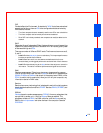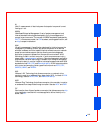
285
W
Watt. A measurement of electrical power that equals 1 ampere of current
flowing at 1 volt.
WBEM
Web-Based Enterprise Management. A set of systems management and
Internet standard technologies developed to unify the management of
computing environments. The core set of WBEM standards, developed by
DMTF, include a data model, the CIM standard, a coding specification, and
an http transport mechanism.
WfM
Wired for management. A specification developed by Intel to improve the
manageability of desktop, mobile, and server computers. WfM defines
software, hardware, and other capabilities that enhance computer network
operations and reduce support costs by allowing remote management
application programs to access client computers over a network. WfM
technology is used in a client computer, in such components as circuitry,
power supply, network adapter, and so on. Remote management application
programs can use WfM technology to access a client computer and gather
information about it, monitor its status, or change its operational state. WfM
standards include DMI, PXE, and Remote Wake Up. WfM is also compatible
with current and emerging industry specifications, such as ACPI, CIM,
SMBIOS, SNMP, and WBEM.
WOL
Wake-on LAN. Technology that allows a computer on a network to be
remotely turned on or awakened from sleep mode. WOL is a facet of WfM
technology. See also WOR, PME, and Remote Wake Up.
WOR
Wake-on Ring. Technology that allows a computer to be remotely turned on
or awakened from sleep mode through a modem. See also WOL and PME.
ZIF
Zero insertion force. A type of socket or connector that allows a computer chip
to be installed or removed with no stress applied to either the chip or its
socket. See LIF.


















